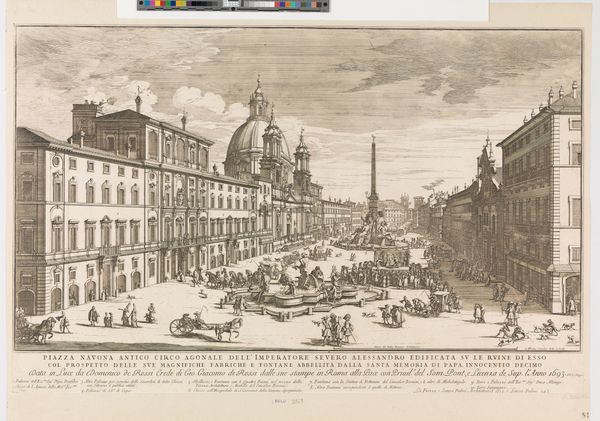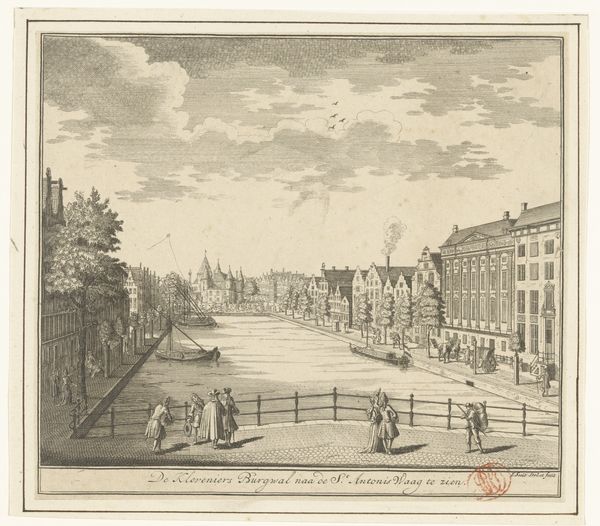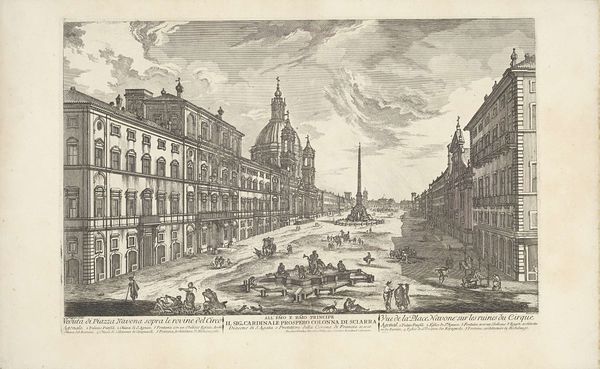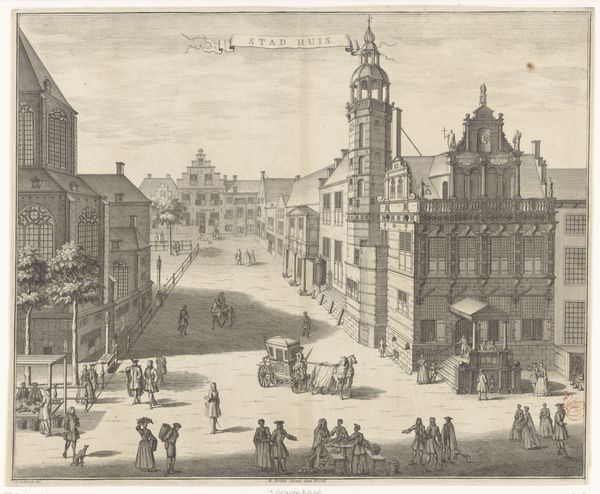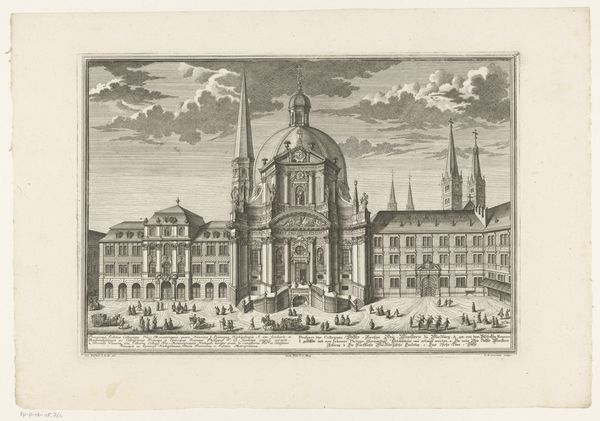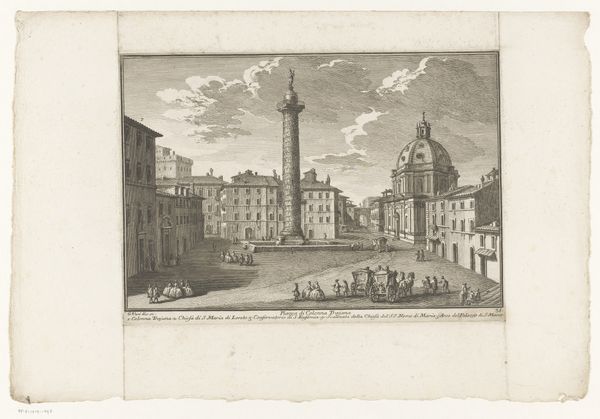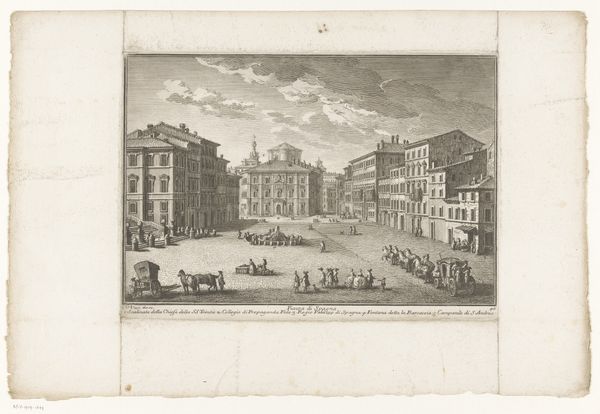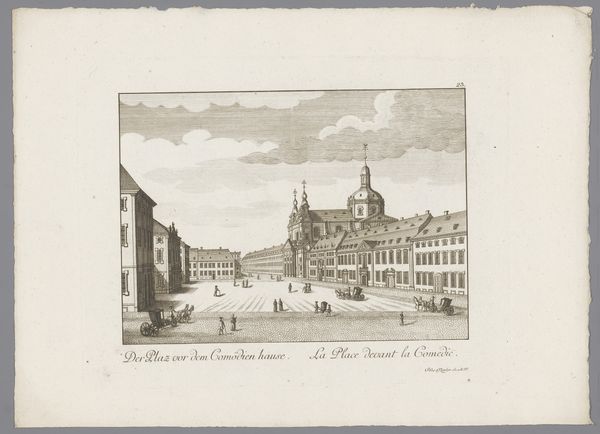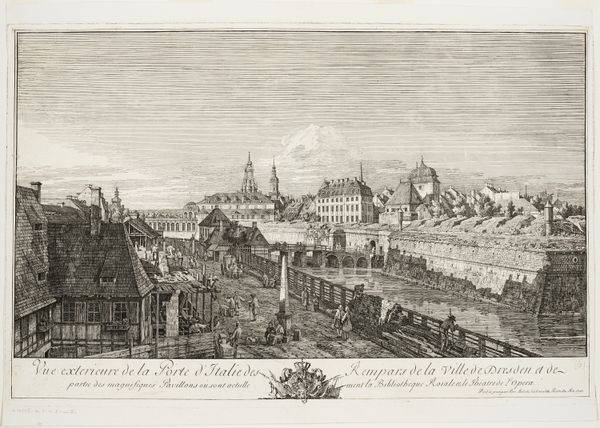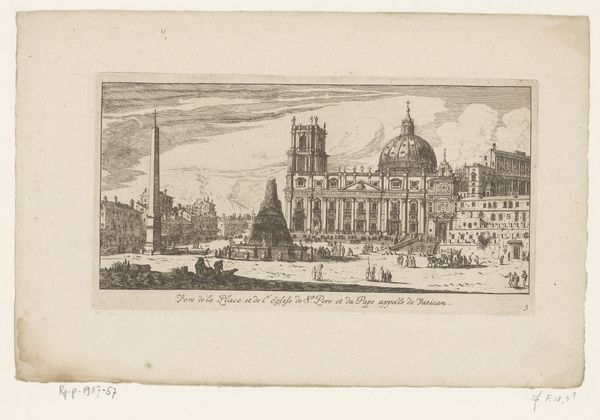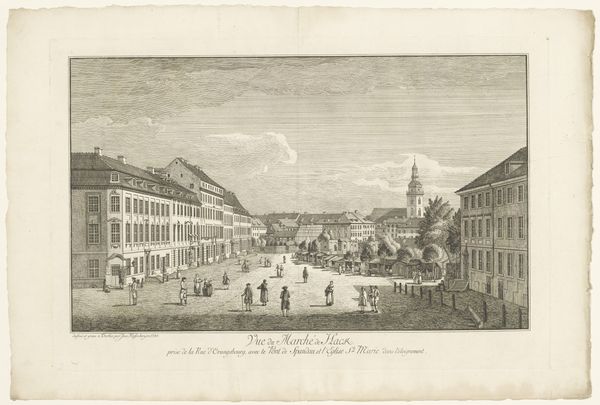
print, etching, engraving
#
baroque
# print
#
etching
#
landscape
#
cityscape
#
history-painting
#
engraving
Dimensions: height 213 mm, width 300 mm
Copyright: Rijks Museum: Open Domain
Curator: Giuseppe Vasi’s "Piazza Navona te Rome," made between 1747 and 1761, is a remarkable example of vedute. It offers an intriguing glimpse into the spectacle of Roman life during the Baroque period, rendered meticulously through etching and engraving. Editor: It’s certainly captivating, all the action pulled toward that center point. What I first notice is this incredibly delicate and layered effect. The contrast of dark, etched lines against the white of the paper create depth and visual rhythm throughout. Curator: Indeed, Vasi’s prints are valued not just for their artistry but as historical documents. They showcase Rome’s urban development, public festivals, and evolving socio-political dynamics. This print captures Piazza Navona during the feast of August, transformed into a temporary lake for the aristocracy's amusement. Editor: The way Vasi uses line to create tonal variation is quite impressive. He evokes the feeling of flowing water, for instance, merely through the density and direction of those lines. The perspective, though somewhat flattened, successfully communicates the grand scale of the piazza. Curator: It reveals the social hierarchy of the time. The flooded Piazza served as a stage for the elite, whilst reinforcing the power structures within Roman society, making it visible and performative. The water, although entertaining, became a symbol of aristocratic privilege and excess. Editor: I am drawn to the geometric structure imposed onto a sprawling urban scene. See the way he’s balanced the composition, using the church dome on the left against the denser buildings on the right, funneling the viewer's eye toward the fountain at the far end? Curator: Beyond the visual balance, the print disseminates Baroque Rome, enabling its architecture and social customs to become objects of knowledge and even desire. It reinforced Rome's image as the epicenter of cultural and religious power across Europe. Editor: Vasi clearly understood how to translate a three-dimensional space into a two-dimensional artwork that remains lively. Studying the balance, structure, and technical skill allows the scene’s historic context to emerge and to enhance that emotional effect. Curator: Examining “Piazza Navona te Rome” reveals the ways in which art not only reflected but also actively participated in shaping the social and political landscape of 18th century Rome. Editor: I appreciate how examining Vasi’s technique allows the underlying vibrancy of Rome's Baroque character and charm to really make an impact on the modern eye.
Comments
No comments
Be the first to comment and join the conversation on the ultimate creative platform.
